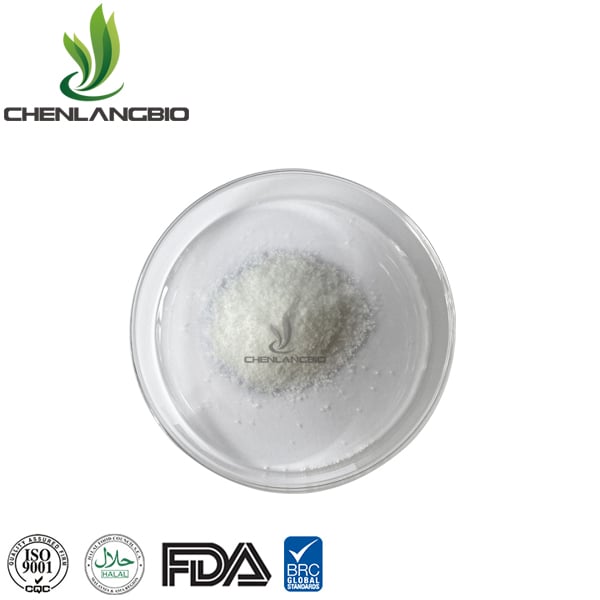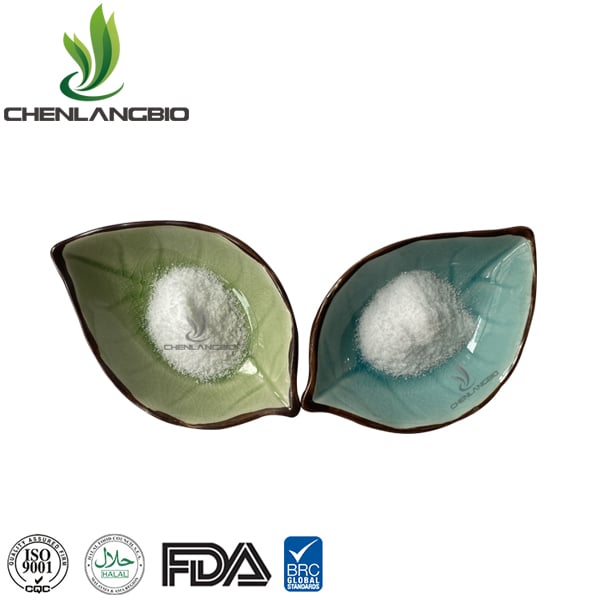


Lactobionic Acid
XI AN CHEN LANG BIO TECH CO., LTD has been producing plant extracts, functional cosmetic raw materials, and nutritional supplements for more than 15 years. High-quality products, safe and stable supply have enabled us to become a global raw material supplier.
ODM
Global Raw Material Supply
Customized Product Development and Testing
Lactobionic Acid: A Promising Ingredient for Skincare
Introduction:
Lactobionic acid, derived from milk sugar, is a unique ingredient that has gained significant attention in the skincare industry. Known for its multifunctional properties, this acid offers numerous benefits for the skin, making it a popular choice among skincare enthusiasts. In this article, we will explore the various uses of lactobionic acid and its potential to improve skin health.
Basic Information:
| Name | Lactobionic acid |
| CAS | 96-82-2 |
| Other Name | 4-O-beta-D-Galactopyranosyl-D-gluconic acid |
| Molecular Formula | C12H22O12 |
| Molecular Weight | 358.30 |
| EC | 202-538-3 |
| Purity | 98%+ |
| Appearance | White Powder |
| Package | 25Kg/Paper drum, 1Kg/Aluminum foil bag |
Why Choose Us
Focus on producing health products for 15+ years
three production lines
Supply high quality cosmetics raw powder
Strictly follow the national pharmacopoeia production process indicator control audit, HACCP, and other quality management systems to strictly demand ourselves, strictly control quality, and continue to provide products and high-quality services to domestic and foreign customers. Prius Biotech is equipped with subcritical extraction and supercritical.
The company strictly follows the ISO9001 quality management system to control every link from incoming materials - processing - inspection - packaging - leaving the factory - sales; it has won global customers with its rapid new product development, stable product quality and high-tech, continuous and stable technical support. The company's products are exported to the United States, Europe, Japan and other places due to its recognition.
The Science Behind Lactobionic Acid:
Lactobionic acid belongs to the family of polyhydroxy acids (PHAs), which are gentle exfoliating agents. It works by breaking down the bonds between dead skin cells, effectively removing them from the surface of the skin. Unlike other exfoliants, lactobionic acid is less irritating and suitable for sensitive skin types. Additionally, it acts as a humectant, attracting and retaining moisture in the skin, resulting in improved hydration levels.
Lactobionic Acid for Skin:
Anti-Aging Properties:
One of the standout features of lactobionic acid is its remarkable anti-aging properties. It functions as an antioxidant, neutralizing harmful free radicals that contribute to premature aging. By reducing oxidative stress, lactobionic acid helps to minimize the appearance of fine lines, wrinkles, and age spots. Furthermore, it stimulates the production of collagen and elastin, proteins responsible for maintaining skin elasticity and firmness.
Skin Brightening and Even Tone:
Lactobionic acid has been found to be effective in brightening the skin and improving overall complexion. It inhibits the production of melanin, the pigment responsible for dark spots and uneven skin tone. Regular use of lactobionic acid can lead to a more radiant and even complexion, making it an ideal ingredient for those seeking a youthful and glowing skin.
Soothing and Healing Properties:
For individuals with sensitive or irritated skin, lactobionic acid can provide soothing and healing effects. Its anti-inflammatory properties help calm redness, reduce irritation, and promote skin healing. Additionally, lactobionic acid acts as a barrier repair agent, strengthening the skin's protective barrier and preventing moisture loss. This makes it an excellent choice for individuals with compromised skin barriers or conditions such as eczema or rosacea.
Incorporating Lactobionic Acid into Your Skincare Routine:
To reap the benefits of lactobionic acid, it is essential to incorporate it into your skincare routine correctly. Look for skincare products that contain lactobionic acid as an active ingredient, such as serums, moisturizers, or toners. Start by using the product once or twice a week and gradually increase usage as your skin adjusts. Lactobionic acid is generally well-tolerated, but as with any new skincare ingredient, it is advisable to perform a patch test before applying it to your face.
Conclusion:
Lactobionic acid has emerged as a promising ingredient in the world of skincare, offering a range of benefits for various skin concerns. From its gentle exfoliating properties to its anti-aging and brightening effects, lactobionic acid is a versatile ingredient that can transform your skin. Whether you are looking to improve hydration, reduce signs of aging, or achieve a more even complexion, consider incorporating products with lactobionic acid into your skincare routine to unlock its full potential.



